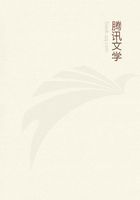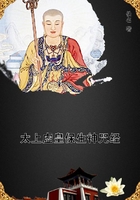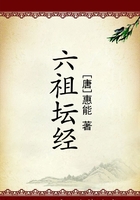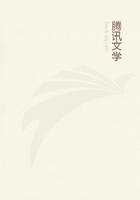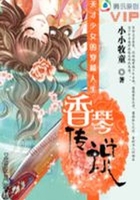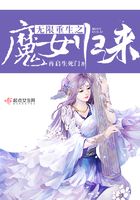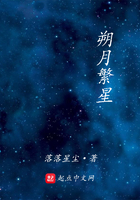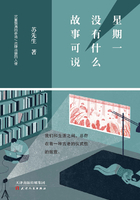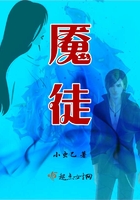Like other gods of vegetation Dionysus was believed to have died a violent death, but to have been brought to life again; and his sufferings, death, and resurrection were enacted in his sacred rites. His tragic story is thus told by the poet Nonnus. Zeus in the form of a serpent visited Persephone, and she bore him Zagreus, that is, Dionysus, a horned infant. Scarcely was he born, when the babe mounted the throne of his father Zeus and mimicked the great god by brandishing the lightning in his tiny hand. But he did not occupy the throne long; for the treacherous Titans, their faces whitened with chalk, attacked him with knives while he was looking at himself in a mirror. For a time he evaded their assaults by turning himself into various shapes, assuming the likeness successively of Zeus and Cronus, of a young man, of a lion, a horse, and a serpent. Finally, in the form of a bull, he was cut to pieces by the murderous knives of his enemies. His Cretan myth, as related by Firmicus Maternus, ran thus. He was said to have been the bastard son of Jupiter, a Cretan king. Going abroad, Jupiter transferred the throne and sceptre to the youthful Dionysus, but, knowing that his wife Juno cherished a jealous dislike of the child, he entrusted Dionysus to the care of guards upon whose fidelity he believed he could rely. Juno, however, bribed the guards, and amusing the child with rattles and a cunningly-wrought looking glass lured him into an ambush, where her satellites, the Titans, rushed upon him, cut him limb from limb, boiled his body with various herbs, and ate it. But his sister Minerva, who had shared in the deed, kept his heart and gave it to Jupiter on his return, revealing to him the whole history of the crime. In his rage, Jupiter put the Titans to death by torture, and, to soothe his grief for the loss of his son, made an image in which he enclosed the child's heart, and then built a temple in his honour. In this version a Euhemeristic turn has been given to the myth by representing Jupiter and Juno (Zeus and Hera) as a king and queen of Crete. The guards referred to are the mythical Curetes who danced a war-dance round the infant Dionysus, as they are said to have done round the infant Zeus. Very noteworthy is the legend, recorded both by Nonnus and Firmicus, that in his infancy Dionysus occupied for a short time the throne of his father Zeus. So Proclus tells us that Dionysus was the last king of the gods appointed by Zeus. For his father set him on the kingly throne, and placed in his hand the sceptre, and made him king of all the gods of the world. Such traditions point to a custom of temporarily investing the king's son with the royal dignity as a preliminary to sacrificing him instead of his father. Pomegranates were supposed to have sprung from the blood of Dionysus, as anemones from the blood of Adonis and violets from the blood of Attis: hence women refrained from eating seeds of pomegranates at the festival of the Thesmophoria. According to some, the severed limbs of Dionysus were pieced together, at the command of Zeus, by Apollo, who buried them on Parnassus. The grave of Dionysus was shown in the Delphic temple beside a golden statue of Apollo. However, according to another account, the grave of Dionysus was at Thebes, where he is said to have been torn in pieces. Thus far the resurrection of the slain god is not mentioned, but in other versions of the myth it is variously related. According to one version, which represented Dionysus as a son of Zeus and Demeter, his mother pieced together his mangled limbs and made him young again. In others it is simply said that shortly after his burial he rose from the dead and ascended up to heaven; or that Zeus raised him up as he lay mortally wounded; or that Zeus swallowed the heart of Dionysus and then begat him afresh by Semele, who in the common legend figures as mother of Dionysus. Or, again, the heart was pounded up and given in a potion to Semele, who thereby conceived him.
Turning from the myth to the ritual, we find that the Cretans celebrated a biennial festival at which the passion of Dionysus was represented in every detail. All that he had done or suffered in his last moments was enacted before the eyes of his worshippers, who tore a live bull to pieces with their teeth and roamed the woods with frantic shouts. In front of them was carried a casket supposed to contain the sacred heart of Dionysus, and to the wild music of flutes and cymbals they mimicked the rattles by which the infant god had been lured to his doom. Where the resurrection formed part of the myth, it also was acted at the rites, and it even appears that a general doctrine of resurrection, or at least of immortality, was inculcated on the worshippers; for Plutarch, writing to console his wife on the death of their infant daughter, comforts her with the thought of the immortality of the soul as taught by tradition and revealed in the mysteries of Dionysus. A different form of the myth of the death and resurrection of Dionysus is that he descended into Hades to bring up his mother Semele from the dead. The local Argive tradition was that he went down through the Alcyonian lake; and his return from the lower world, in other words his resurrection, was annually celebrated on the spot by the Argives, who summoned him from the water by trumpet blasts, while they threw a lamb into the lake as an offering to the warder of the dead. Whether this was a spring festival does not appear, but the Lydians certainly celebrated the advent of Dionysus in spring; the god was supposed to bring the season with him. Deities of vegetation, who are believed to pass a certain portion of each year underground, naturally come to be regarded as gods of the lower world or of the dead. Both Dionysus and Osiris were so conceived.

